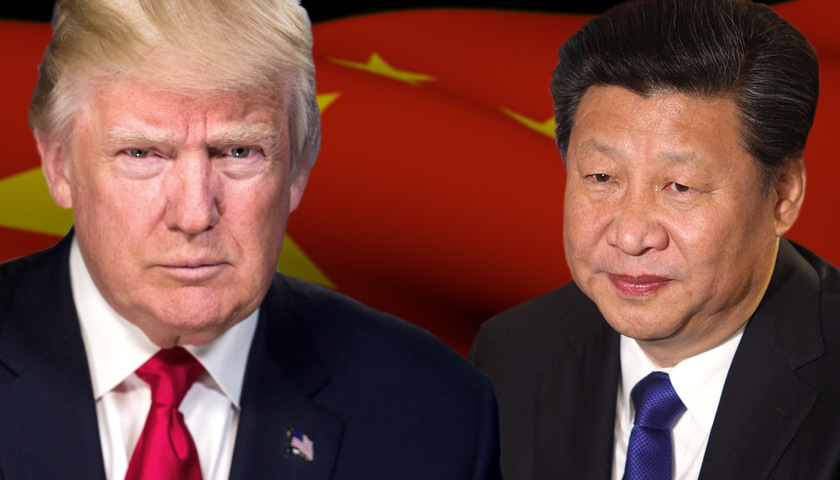by Robert Romano
“Now look, China wants to make a deal, and I say they’re not ready yet. I just say they’re not ready yet. And we’ve canceled a couple of meetings because I say they’re not ready to make a deal. We can’t have a one-way street. It’s got to be a two-way street. It’s been a one-way street for 25 years. We gotta make it a two-way street. We’ve got to benefit also.”
That was President Donald Trump’s declaration to China on Oct. 9 that there won’t be a deal on trade anytime soon.
Not while the U.S. is running a $375 billion trade in goods deficit every year.
So far, Trump is levying 10 percent tariffs on $200 billion of Chinese goods shipped to the U.S., rising to 25 percent in Jan. 2019. That came atop a 25 percent tariff on $50 billion of goods from China.
And Trump did warn that if China retaliates, another $267 billion of tariffs would follow.
Well, so far, China has retaliated with tariffs on $60 billion of goods including agricultural products soybeans and pork.
In one gambit, China tried to exact a political toll by taking out a 4-page ad in the Des Moines Register to try and rattle agriculture states like Iowa that tend to vote Republican. Nice try.
Trump responded to the tariffs with disbursing $6 billion of trade relief for farmers from monies already appropriated by Congress, with another $6 billion in reserve if things get dicey.
On currency, China has devalued the yuan almost 9 percent the beginning of the year.
Overall, the U.S. only exports $135 billion of goods to China. Once they’ve slapped tariffs on the other $75 billion what else can it really do to retaliate? They’re running out of bullets.
In the meantime, Trump has concluded major trade deals with South Korea, Mexico and Canada, with more on the way from Europe and Japan. China is becoming isolated globally.
Which is why Trump won’t do a deal right now. They’re not offering anything we want. In May, the Trump administration asked China to cut the trade deficit by $200 billion by 2020 as part of a trade agreement. They said no.
And that’s why the $200 billion tariff was levied.
While some economists have worried about consumer inflation, so far, it hasn’t been found. Consumer prices are relatively stable, with a 2.2 percent increase the last year less food and energy.
So, it remains to be seen what price China will be able to exact from the U.S. So far, it’s been a paper tiger. Round one goes to Trump.
– – –
Robert Romano is the Vice President of Public Policy at Americans for Limited Government.




